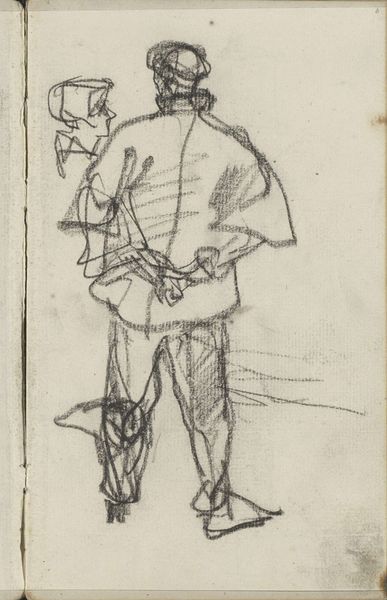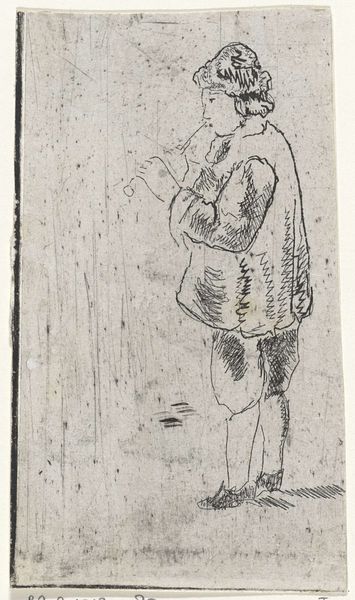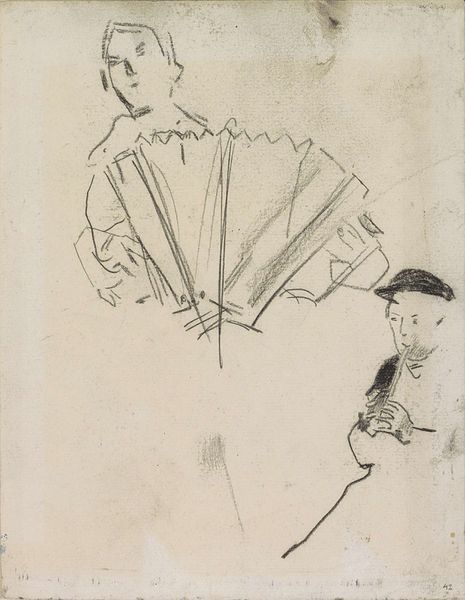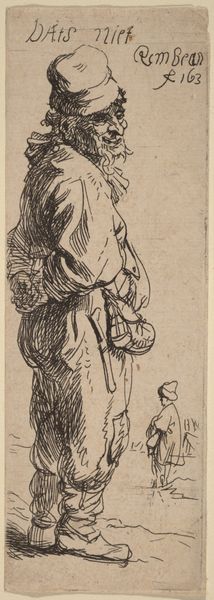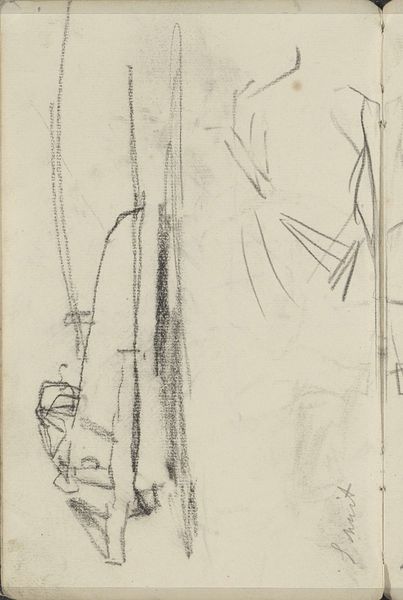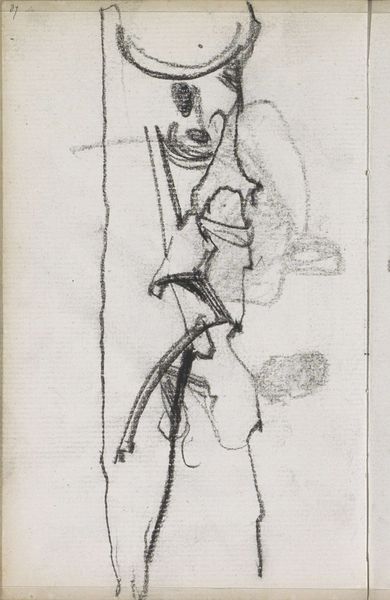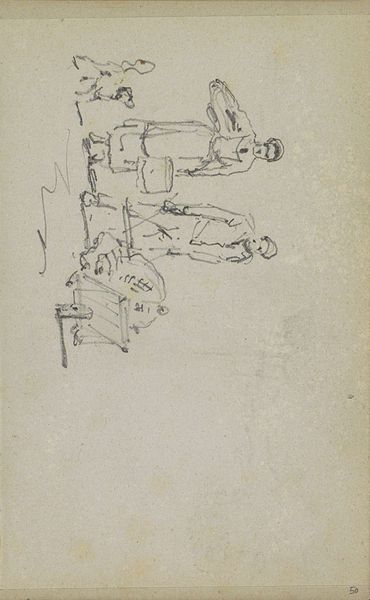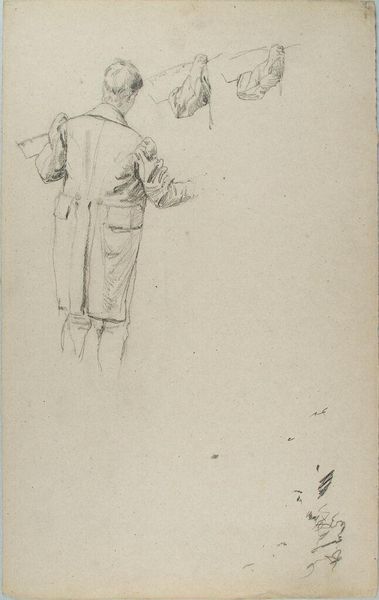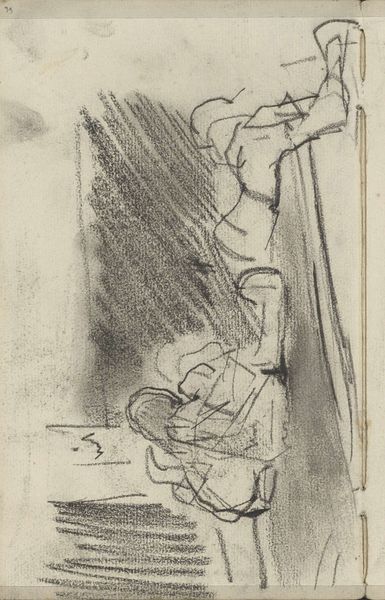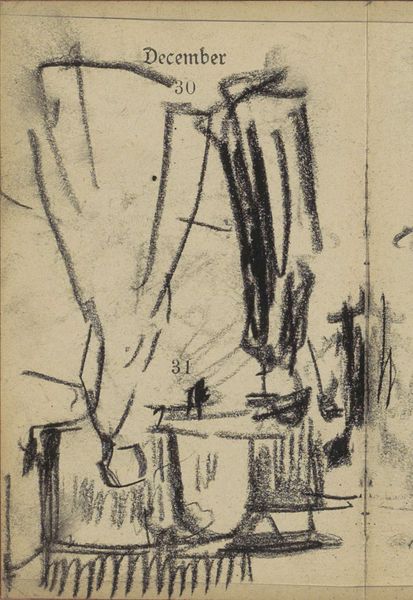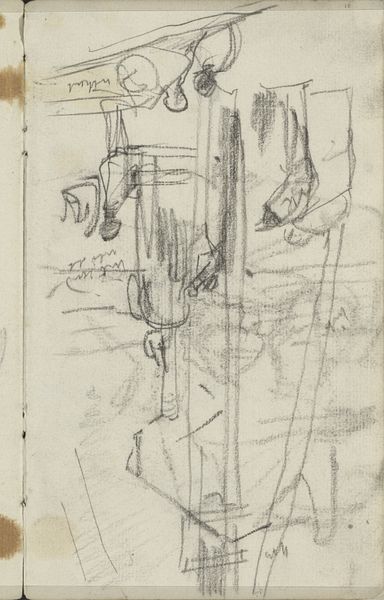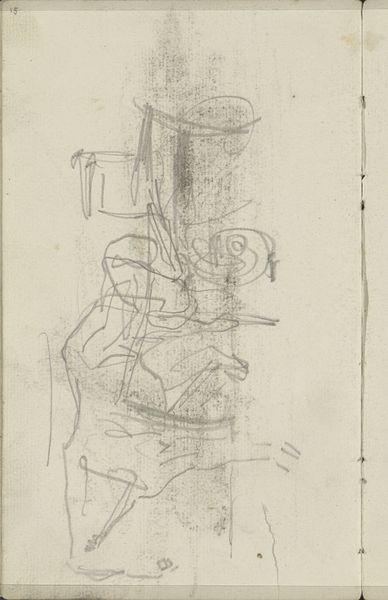
drawing, graphite
#
portrait
#
drawing
#
figuration
#
graphite
Copyright: Rijks Museum: Open Domain
Editor: So this is "Standing Boy and Two Figures, in Profile," a graphite drawing by Isaac Israels from around 1886 to 1934. It has a spontaneous, almost journalistic quality to it. What jumps out at you when you look at this drawing? Curator: What's most compelling is the starkness of the materials and their application. We see graphite on paper; these are common materials, available, relatively inexpensive. Consider the social context - this was a period of increasing industrialization, where mass production made art materials more accessible, shifting power dynamics in who could *make* art. Editor: So, the ease of accessing the medium matters in this case. How would it shift power? Curator: Precisely. Before this proliferation, art making was mostly in the hands of the elite class because they had the resources to create their works. Now, looking at the technique: quick, sketchy lines. Israels wasn't painstakingly rendering detail. This points to a prioritization of capturing a moment, an essence, over formal polish, further blurring the line between “high art” and everyday observation and even a type of visual “labor.” How do you see that at work in this image? Editor: It definitely feels like he captured a specific moment, more about the subjects than the skill itself. Does the context change our perspective on art and art-making? Curator: Absolutely! It forces us to question traditional hierarchies and to think about art not just as a precious object but also as a product of specific social and economic forces and a means of production itself. Understanding this challenges assumptions around artistry. I’ve certainly seen new significance in this piece thanks to your perspective! Editor: That makes a lot of sense. Thanks!
Comments
No comments
Be the first to comment and join the conversation on the ultimate creative platform.

